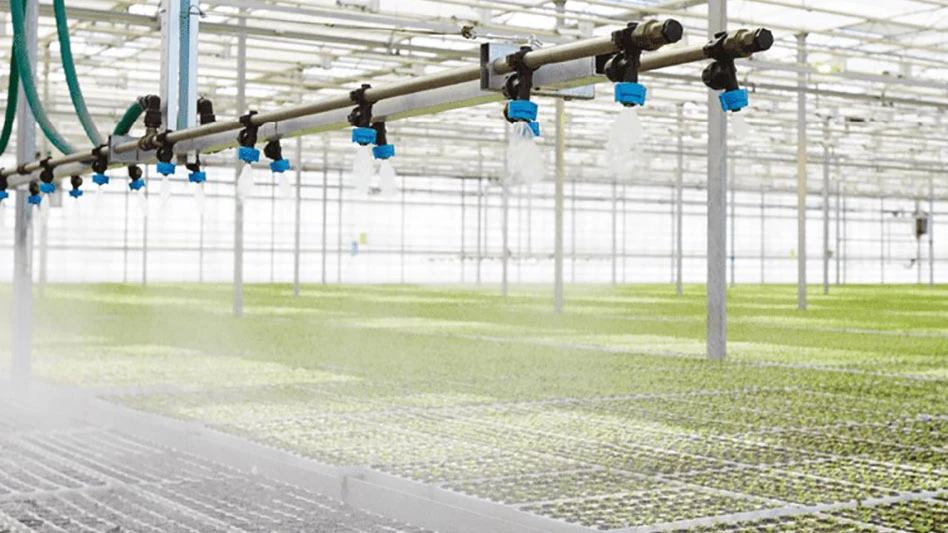

Jason Deveau, aka “The Spray Guy,” is an application technology specialist focused on farm chemical application research in Canada for the Ontario Ministry of Agriculture, Food and Rural Affairs.
Although the bulk of his research is focused on applications in field crops, the researcher does devote a significant amount of resources to what he calls “the physics of spraying in a close environment, and how to analyze your coverage.”
“To my mind, close environment spraying is one of the more complicated forms of application technology that’s out there, because in many ways it is just so [much more] complex than field spraying,” he shared during a recent webinar. “And greenhouse [spraying] was really the hardest nut to crack ...”
Having worked in government-funded application research since 2008, Deveau publishes best practices for chemical applicators and growers alike on his free Sprayers101 website, sprayers101.com.
“What I’ve tended to gravitate to most readily (in my work) has been air blast sprayers,” he adds, noting that much of the information available today on chemical application is comprised from a field crop perspective.
Here are four takeaways from Deveau’s presentation:
- Ideal droplet size in greenhouse applications, all things being equal, can be anywhere from a dry fog/aerosol droplet size (5 um) to light rain (200 um), and generally speaking, the smaller you make your spray droplets, the better the coverage. However, there are always trade-offs, and in this case the trade-off comes in that you improve coverage by making droplets finer, but you get less of a spreading effect on foliage.
- Another benefit of smaller, or finer, spray droplets is that it is very unlikely you’ll have much or any product runoff. “And when we’re talking about spraying in the greenhouse, where you’ve got taller, more 3D canopies often, for what we deem ‘vertical targets’ that is a big issue,” Deveau says.
- There are differences to keep in mind when spraying conventional crop protection products versus biorational or biological-based active ingredients. “Those bio-based products often require a higher level of application accuracy than with conventional products,” Deveau said.
- A lot of the greenhouses he visits are “using pressures that are just way, way too high,” Deveau shared. Often this is because the stock tank is in another bay, or across the greenhouse, and that higher pressure is needed to get the spray out of the stock tanks to the plants. Often, he says, although pressure can be a valuable tool, it is better to change out your nozzles (right nozzle, right job) than to crank up the pressure in your sprayer.
Deveau is a big proponent of growers using two technologies in chemical applications in greenhouse environments: air blast sprayers (versus the typical wanded hand-pump sprayers) that can penetrate the dense canopies of ornamental crops more effectively, and water sensitive paper staged throughout the crop to evaluate spray coverage. “When you start spraying your own crops, don’t guess,” he says. “Use water sensitive paper throughout the canopy to see exactly where your spray is going.”
If you do decide to go the air blast sprayer route, or perhaps you’re already applying products with one, Deveau’s website has a free downloadable eBook titled “Air Blast Spraying 101” with tips and best practices.

Explore the March 2022 Issue
Check out more from this issue and find your next story to read.
Latest from Greenhouse Management
- Anthura acquires Bromelia assets from Corn. Bak in Netherlands
- Top 10 stories for National Poinsettia Day
- Langendoen Mechanical hosts open house to showcase new greenhouse build
- Conor Foy joins EHR's national sales team
- Pantone announces its 2026 Color of the Year
- Syngenta granted federal registration for Trefinti nematicide/fungicide in ornamental market
- A legacy of influence
- HILA 2025 video highlights: John Gaydos of Proven Winners





